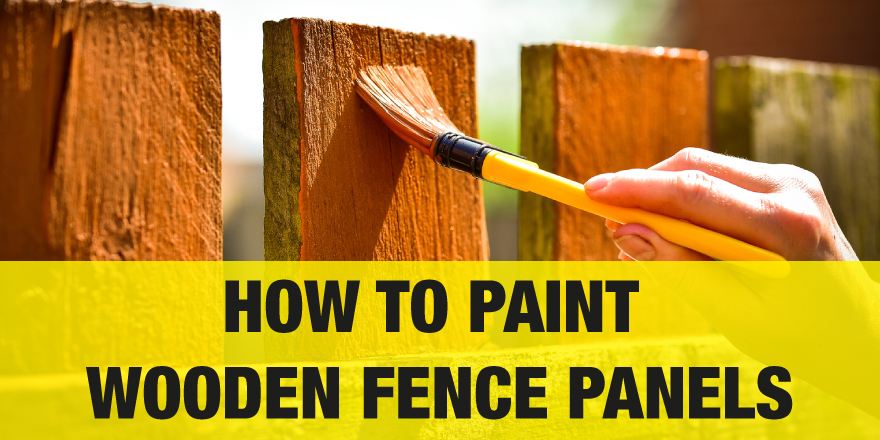HIPPO’s Guide on How to Paint Wooden Fence Panels

Wooden fences have to deal with the change in weather conditions each and every day, from the hot sun, torrential rain, and gale force winds. To keep them looking neat and clean, they need re-painting from time to time to prevent rot, fungi and discolouration.
WHAT TYPE OF PAINT SHOULD YOU USE?
There are many types of wood paint available that are designed to be durable, weather resistant and usually wiped clean. If you use an undercoat or wood paint primer, your wood will have a longer lifespan and you won’t have to repaint as often.
When purchasing your paint, make sure to read the tin carefully to see what its intended use is and that it’s suitable for outdoor use.
WHAT TOOLS DO I NEED?
This all depends on how you prefer to paint as you can choose to use a brush by hand or opt for a pump or power sprayer to speed up the process. A power sprayer can be 10 times faster than painting by hand, but you need to make sure you are using a paint that is suitable for a sprayer and you don’t use it on a windy day.
If you choose to use paint brushes, opt for a good wide brush to cover the surface area quicker and smaller brushes for edging and to get into awkward corners.
APPLYING THE PAINT
Before you begin painting, you need to make sure your surrounding area is covered with either dust or plastic sheeting. If there are plants in front of your fence, you may need to trim them back or use temporary plant ties.
Prepare your fence by sanding any rough areas and ensuring the surface is as flat and smooth as possible. Once you have prepped your fence, apply a layer of primer or undercoat to increase the life span of your paint.
If you’re painting by hand, make sure to use horizontal strokes for horizontal panes and vertical strokes for vertical panes to give you a smoother and more aesthetically pleasing finish. Alternatively, use your power sprayer to evenly paint the whole fence in just a few minutes.
Once complete, leave to dry and check for any missed areas. Most quality fence paints will only need one coat, but if you feel you need a second coat, repeat the process again.
CLEANING UP
When you’ve finished your project, it’s important to get rid of any waste paint produced responsibly. HIPPOBAGs are the savvy way to deal with waste disposal after any DIY job, and they're perfect for those empty, ragged out and dry paint cans too.

